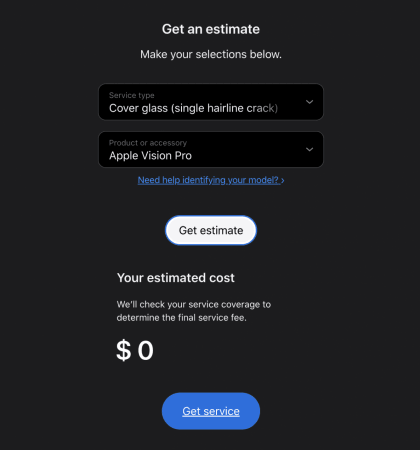
Apple has quietly updated its Vision Pro Repair and Service page to include a new repair category for hairline cracks on the front glass. Users who select "Cover glass (single hairline crack) as the service type for Apple Vision Pro will now see an estimated repair cost of $0, indicating that Apple is offering this service free of charge.
The update comes amid reports of Vision Pro owners noticing hairline cracks appearing near the nose bridge, despite handling the device carefully. While Apple hasn't issued an official statement on the matter, this latest development suggests that the company has acknowledged the issue and is proactively offering a solution.
How to get Vision Pro hairline crack repair for free?
Vision Pro users experiencing a single hairline crack on the front cover glass can now request a free repair through Apple's official service channels. Follow the steps below:
- Visit Apple's Vision Pro Repair and Service page.
- Choose "Cover glass (single hairline crack)" as the service type.
- Select "Apple Vision Pro" under the product category.
- Click on "Get Estimate" and confirm that it's $0 and hit the "Get Service" option to proceed.

Apple has not provided details on what might be causing these cracks, nor has it indicated whether this issue is covered under warranty or handled as a goodwill repair. However, by offering free fixes, the company is ensuring that affected users can have their devices serviced without additional costs.
But if you've got multiple cracks on the cover glass or any other damages, it will still cost you hundreds or thousands of dollars.
Hairline cracks on Vision Pro
Apple Vision Pro, launched as a high-end mixed-reality headset, features a premium front glass panel, which some users reported developing thin vertical cracks above the nose bridge last year. While the cause remains unclear, speculation has pointed to pressure points, thermal stress, or structural factors.
This new repair service comes after multiple reports from early adopters discussing the issue across online forums and social media. Some news publications also covered the development in late February last year.

















